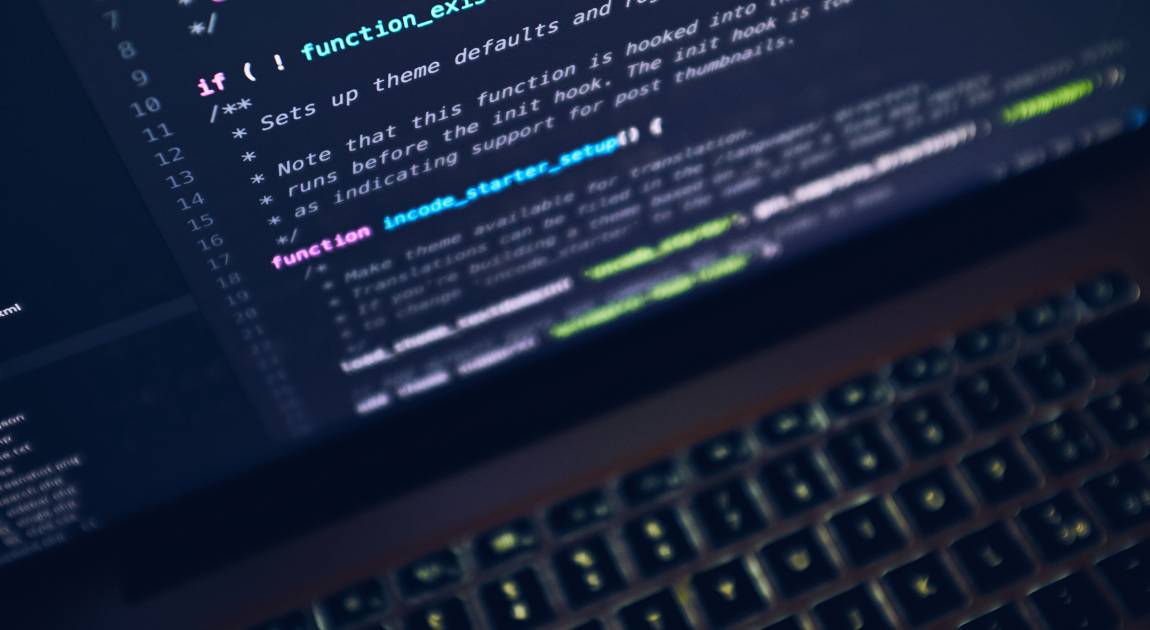Once AI and ML got good enough to actually improve code and help with tasks, a wave of sensationalism swept across media from tech news outlets to LinkedIn. Reactions range from ecstatic to apocalyptic, depending on the person. Simultaneously, some are already trying to downplay the role of AI, assuming an “edgy skeptic” position (which is also hardly justified). But will AI really replace software engineers?
Our team has been researching this based on our own experiences with AI as a development tool. We’ve even institutionalized and formalized some of our more important AI augmented software development policies, and here’s what the perspective looks like to us – and actually to a lot of our colleagues in the industry.
Why the idea? The impact of AI on software engineering so far
As of 2025, about 84% of developers in a StackOverfow survey reported using (or planning to use) AI tools for coding – an impressive figure for just several years after the initial outburst. In a different survey, 42% out of AI users said at least half of their new code was being generated. Big tech like Google and Microsoft now claim about ¼ of their code is AI-produced.
These statistics can sound overwhelming, so to a person with a business (and not tech) background this might seem as the start of obsolescence for the human profession of developer. The trick is that the raw numbers don’t really take into account what it means for code to be AI-generated.
- Does that mean the developer leaves the artificial intelligence to do what it pleases and happily pushes the code afterwards?
- Does that mean the developer uses AI the way they had used Google and forums before?
- Does that mean they let AI create boilerplate code and then use it as a foothold to write the finished code?
- Or let AI optimize what’s been written already?
Adoption rates are really spectacular when you don’t differentiate between the different uses of AI and render your picture of what’s happening as a black and white one. The reality, though, is that nuance matters, and engineers know what they want from AI: mainly the opportunity to save time. Developers using AI coding assistants report cutting 30–60% of the time on tasks like coding, debugging, and documentation.
Which is, of course, a fortunate development in an era of quickly-produced yet preferably unique solutions where project design and architecture matters a lot and code robustness is taken for granted.
Where artificial intelligence can replace programmers
With all that in mind, let’s now look at where AI really gives us humans a run for our money – and is actually used.
Code generation and refactoring
By now, most developers have at least tried tools like GitHub Copilot or Amazon CodeWhisperer. Apart from guessing and auto-completing code from partial snippets, such tools can now generate functional code from natural language prompts, as well. For a developer, this means they can “scaffold” new modules and entire prototypes easily, with clean, neat code. Especially in cases where you want to explore several implementation strategies, this is valuable.
QA automation
Quality assurance is a science that relies on spending huge amounts of effort in all possible directions, so automation is a natural need here. What’s really important about AI in QA automation is that it learns from prior test outcomes, predicting likely failure points. Plus, new test cases are generated dynamically, which is a huge time-saver. Of course, there still are realms like new user flows or emerging edge cases that require domain understanding that comes with human involvement.
Documentation
Developers are often very close to the comedy stereotype of a college professor who’s a genius in their field but fails miserably at explaining it. “Where is the documentation?” is a frequent meme. Enter AI, and voila – it can auto-generate docstrings and readme files, translating code logic into human-readable explanations. Of course, documentation is also about intent, i.e. why something was built, not just how it works, so extra effort needs to be put into making AI describe more than just functionality.
Bug detection and static analysis
AI-powered static analysis tools can identify issues that traditional linters miss. They learn from real-world bug patterns, analyze context, and flag potentially problematic code. Some even propose targeted fixes, which is good for triage time. However, bug detection AI can overfit to patterns it “knows,” producing false positives or missing issues in novel architectures.
DevOps and infrastructure management
In DevOps, AI takes on the heavy lifting of monitoring, scaling, and optimization. Predictive algorithms can forecast resource demand, automate incident response, and fine-tune deployment pipelines. This “self-healing infrastructure” reduces downtime and operational burden. Infrastructure automation can introduce somewhat of a trust challenge, too, but having a tireless assistant around is undoubtedly among the best things to have happened in this field.
The big difference
So it turns out, artificial intelligence can do quite a lot. When it comes to generating a nice, clean and crisp chunk of code, documenting it and writing some unit tests to accompany it, an AI model is a model employee indeed. However, there is one big difference.
All in all, it boils down to keeping the surrounding circumstances in mind. Code isn’t written for its own sake, it’s not some sort of self-contained ars gratia artis – it functions in context, and context is usually, well, blurry.
Such context can include the surrounding system, adjacent systems, their own peculiarities stemming from years of aggregated little artifacts and historic peculiarities – plus the industry and business specifics on top. Humans naturally keep all that in their head on a subconscious level, and don’t need to be actively taught them.
Which means seeing the big picture is still pretty much the human prerogative (and burden). Theoretically, you could tell artificial intelligence about all the circumstances in a prompt, if you can enumerate them neatly, but doing so is a bit like making your cat bring you the car keys: it’s more effort than doing the thing yourself. Long-term planning, taking accountability, and thinking outside the box (that is, outside the immediate file repository) is still what humans need to do.
What AI can’t do well (or shouldn’t be made to do at all)
While artificial intelligence is invaluable (and often better) at doing self-contained tasks, there are still areas where it’s better not to force it.
System architecture and design
This is one of the classic cases of long-term planning tasks that rely on outside awareness. Deciding modules, data flows, scalability strategies, and so on – all that is tied to understanding not just how the system would be perfect in and of itself, but perfect in its connection to the outside world. AI can propose standard patterns, but it cannot weigh long-term maintainability versus short-term delivery speed, or trade-offs between performance, security, and cost.
Some more complex problem solving
AI can optimize or suggest implementations for known patterns, but inventing novel algorithms or solving unprecedented technical challenges remains firmly in human hands. Researchers and engineers often need to think creatively across disciplines – something AI lacks the intuition or lateral reasoning to do. Relying on AI here could lead to “pattern echoing”, where solutions are safe but uninspired, potentially leaving critical innovations undiscovered.
Anything where business context matters
There are two types of good software – (a) good software you’d want to show to students, perfectly rational and structured like a fine crystal – and possibly as useless as a crystal – and (b) good software that solves business problems or sells well to users, which reflects the very imperfect human nature with perfect inner workings.
This is where code needs to be aligned with business objectives, user needs, and, increasingly, regulations, and sacrifices need to be made. Features are reprioritized, trade-offs are made for budget or deadline reasons, market, legal, and other considerations are taken into account. That’s where humans are absolutely needed.
Ethical, legal, and security judgement
AI can detect some vulnerabilities or compliance violations, but deciding whether a design is ethical or legally acceptable is still human territory, as in privacy-sensitive features that require judgment beyond syntax, or security decisions may need moral or regulatory prioritization.
AI-augmented software development: what is it like?
The potential, but also the limitations, of artificial intelligence posed somewhat of a dilemma before software development companies. On the one hand, not using it at all is simply not feasible, since the expectations for speed of delivery have changed. On the other, having zero control over how these tools are used and when, especially by the junior staff, is also a bad idea. This is why a new “code of conduct” is being created for what’s been already dubbed, AI-augmented development.
The key word here is, of course, “augmented”, not “replaced”. In essence, it’s a collaborative workflow, where there’s a clear understanding of where it’s okay to use AI tools – so that the developer can focus on higher-value problems at hand.
In practice, AI-augmented development often looks something like this:
- Developers start a new module by writing partial code or high-level prompts, and AI generates suggestions or boilerplate implementations.
- It can also propose refactoring options, flag potential bugs, or highlight areas for optimization, which the developer reviews and adjusts.
- Documentation and comments are drafted by bots and then refined by humans to ensure clarity and alignment with design intent.
- In testing, bots generate test cases, simulate edge scenarios, and analyze results, while developers focus on interpretation and decision-making.
This is a kind of iterative process, with a human-in-the-loop (HITL) approach to it. In this way, whatever it is that the artificial intelligence outputs is always validated and contextualized.
The future
So what does the near future hold, then? It’s clear that a complete replacement of developers with AI is not something that’s going to happen, but neither is the role of developers going to survive into the future the way it has been until recently. Let’s look at what’s likely to happen by the end of this decade.
Role of the developer
First of all, the literal job description of a software developer or engineer will change. Whereas traditionally, routine coding and debugging were at the center of HR attention, now that these tasks are handled by AI, the focus will shift.
Of course, the basic skills required for routine tasks will persist – you can’t evaluate generated code without understanding how it works in the first place – but the engineers will be expected to excel at other fields. These include design decisions, creative problem-solving, soft skills, and the often overlooked category of industry-specific expertise that lies somewhere between hard and soft skill categories. In other words, instead of a super-productive code typer, a developer will be more like a context-sensitive curator.
New job titles
In many cases, there will be a bifurcation between the updated understanding of the specialist’s role and an altogether new skillset: much like there was a split between painters and photographers in the 19th century.
Even now, we are seeing job titles like “AI-assisted software engineer”, “prompt engineer”, and so on. As of today, many of them are simply disguises for underpaid positions, but a new understanding is emerging. Another addition will likely be an AI software ethics auditor, since regulations are only piling up and not going anywhere.
Economic impact
Economically, all this also spells change for the industry as a whole. First of all, with faster time-to-market for most solutions becoming the norm, the markets will be inundated with software, which will then become more and more diversified. This will also be helped by the improved cost efficiency – the main bulk of the project cost will be spent not as much on the hours of actually writing code, but rather on thinking what code would be perfect in what situation. It’s akin to haute couture fashion – the price of a Met Gala dress is not so much a derivative of how many hours it took to sew together but rather of the designer’s idea.
As for innovation, it is really hard to say whether things are to improve or not. On the one hand, rapid prototyping might help to test different options and explore solutions that were once time-prohibitive. On the other, there’s a risk of mediocrity at the initial stages, since there will likely be an outburst of all-too-similar solutions on the market which will then be used to teach the algorithms. Eventually, things will likely even out, though.
Speaking of Lionwood.software, our position is that of careful enthusiasm. We have a company-wide framework of policies concerning responsible AI use, which is constantly updated while keeping the main things in mind – that is, how well the product fits the customer’s needs. Our idea is that instead of rushing to complete as many projects as possible over a period of time, it is more sensible to redirect the professional attention of the coder and QA alike towards the goals that were often overlooked in the era of manual coding for lack of time. You can learn more about our AI-augmented development services here – and don’t hesitate to contact our experts to discuss your project at any time.












